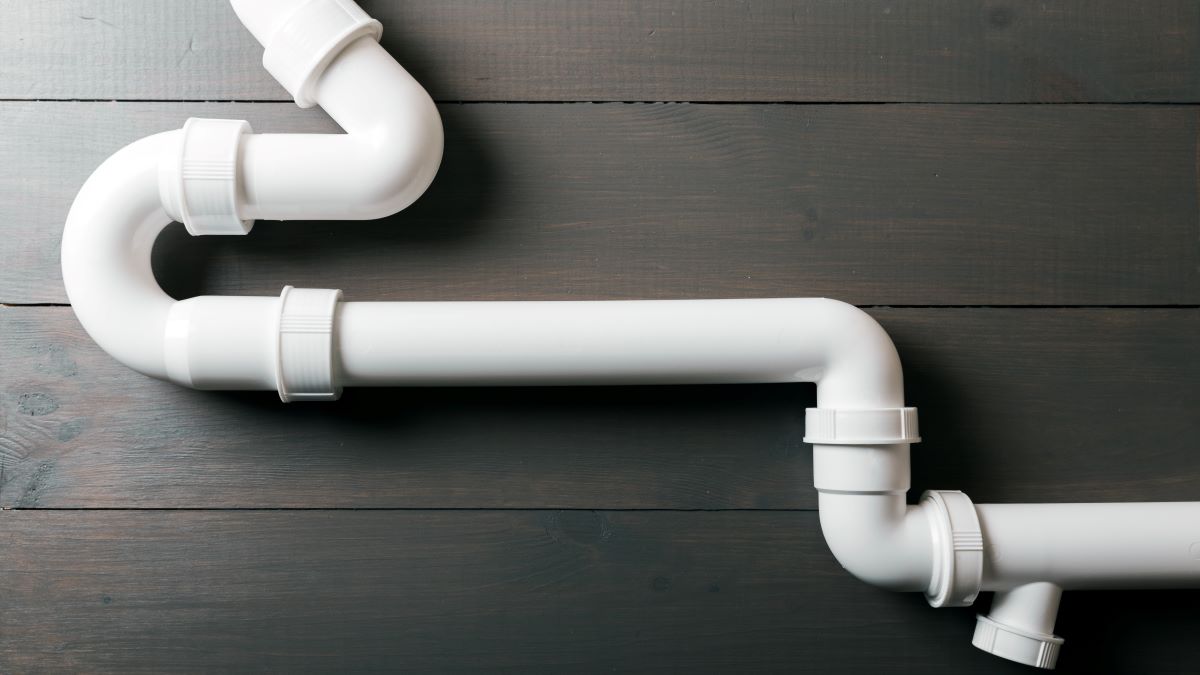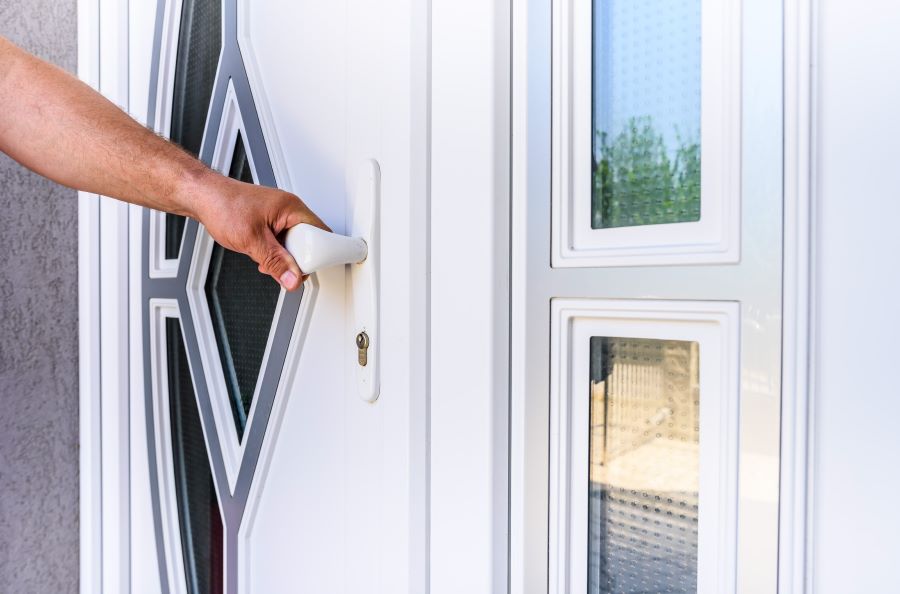PVC: Another Problematic Plastic

At the turn of the century, everybody was up in arms about the hazards of vinyl. More properly known as polyvinyl chloride, or PVC, the substance inspired slogans – “No vinyl, that’s final” and “No PVC for me” – as well as a documentary film, “Blue Vinyl” that explored the environmental and health risks throughout the life cycle of the ubiquitous material. Today, vinyl is no less ubiquitous and no less harmful. Although fewer people are paying attention to vinyl these days, PVC and other chlorinated polymers have made the Living Building Challenge Red List of worst-in-class building materials to avoid.
Polyvinyl Chloride
PVC is the most commonly used plastic in building products, and the third most used plastic in the world, thanks to its extreme versatility, unique technical properties, recyclability, and affordability. Unfortunately, the chloride monomer in PVC is a known human carcinogen. PVC can also contain other Red List materials including heavy metals and phthalates, which can off-gas from vinyl products like shower curtains. Also, PVC’s most harmful component, vinyl chloride, can off-gas from PVC products, but only when they are new. (Think of the scent of a new plastic shower curtain or that new-car smell.) PVC is a persistent organic pollutant source material because the manufacture and disposal of chlorinated polymers can result in the production of extremely toxic dioxins.
However, you are unlikely to find the highest levels of vinyl chloride in your home. Instead, PVC presents a classic case of environmental injustice; vinyl chloride primarily impacts the workers and nearby residents of the factories where PVC is manufactured, rather than the consumers who drive demand for the products. The air around factories that produce vinyl products contains the highest levels of vinyl chloride. Vinyl chloride can also enter household air from contaminated water. Contaminated water is more likely to be found near factories, but can result from PVC pipes under certain circumstances. Vinyl chloride can also be released if PVC is burned. Despite that hazard, communities that incinerate waste routinely accept PVC in the garbage.
Chlorinated Polymers
PVC is the most common chlorinated polymer, but it’s not the only one. Others to look out for include polyvinylidene dichloride (PVDC), chloroprene (a monomer used to make Neoprene), and chlorinated polyvinyl chloride (CPVC). Like vinyl chloride, the chemical building blocks used to make these plastics (chloroprene, chlorinated polyethylene [CPE], and chlorosulfonated polyethylene [CSPE]), are persistent organic pollutant source materials. Although they are not always interchangeable in consumer products, all of these plastics share similar benefits and hazards.

PVC at Home
Every home in America contains PVC, both in building materials and in household items. PVC building materials include pipes, cables, window frames and blinds, building siding, floor tiles, roofing membranes, and more. For some building materials, nonvinyl alternatives may not be available. Where there are alternatives, they are usually more expensive than vinyl. Labeled #3 plastic in household items, PVC makes shower curtains, toys, imitation leather, crib bumpers, and even plastic wrap and other food packaging.
Disposing of PVC
Although PVC is technically recyclable, PVC is the least recycled plastic, with less than one-quarter of 1% of post-consumer PVC recovered for recycling. Most curbside recycling programs and recycling centers do not accept vinyl (although it is worth checking your local options). If your local recycling program does not accept PVC, finding a recycling option can be a challenge. There is a fee-based option for recycling shower curtains, but PVC garden hoses cannot be recycled because of their shape. If you have generated PVC waste as part of a home renovation or construction project, there may be more PVC recycling options available to your contractor through construction and demolition recycling centers, at least in some parts of the country.
Avoiding PVC
Completely avoiding PVC may be impossible. Despite the material’s environmental and health impacts, there may be times when it is the best choice. In some cases, there may not be alternative materials available. Except for those privileged with an unlimited budget, the available alternatives can be prohibitively expensive. Despite the problems with PVC, it is still a better option for plumbing than lead if you cannot afford copper pipes. Most people can probably swing the extra cost for a fabric shower curtain or rubber garden hose. But the cost for more sustainable siding options can be prohibitive for many homeowners. Convincing your children they don’t want the plastic toys their friends have may be an even bigger challenge than money.
Even if “no vinyl” is unrealistic, it’s worth taking on the challenge to avoid PVC when you can. Despite the challenges, plastic-free is a worthwhile goal.
So all we can do is reduce what we can reduce, starting with cling film, food packaging and certain toys, the rest it is a catch 22 situation. In the example of PVC on windows, balancing the time the product lasts against having to renew ordinary windows is the challenge. As with everything good maintenance does help in the long run, but it is not always possible.
The blog song for today is:"Sweet emotion" by Aerosmith
TTFN



No comments:
Post a Comment